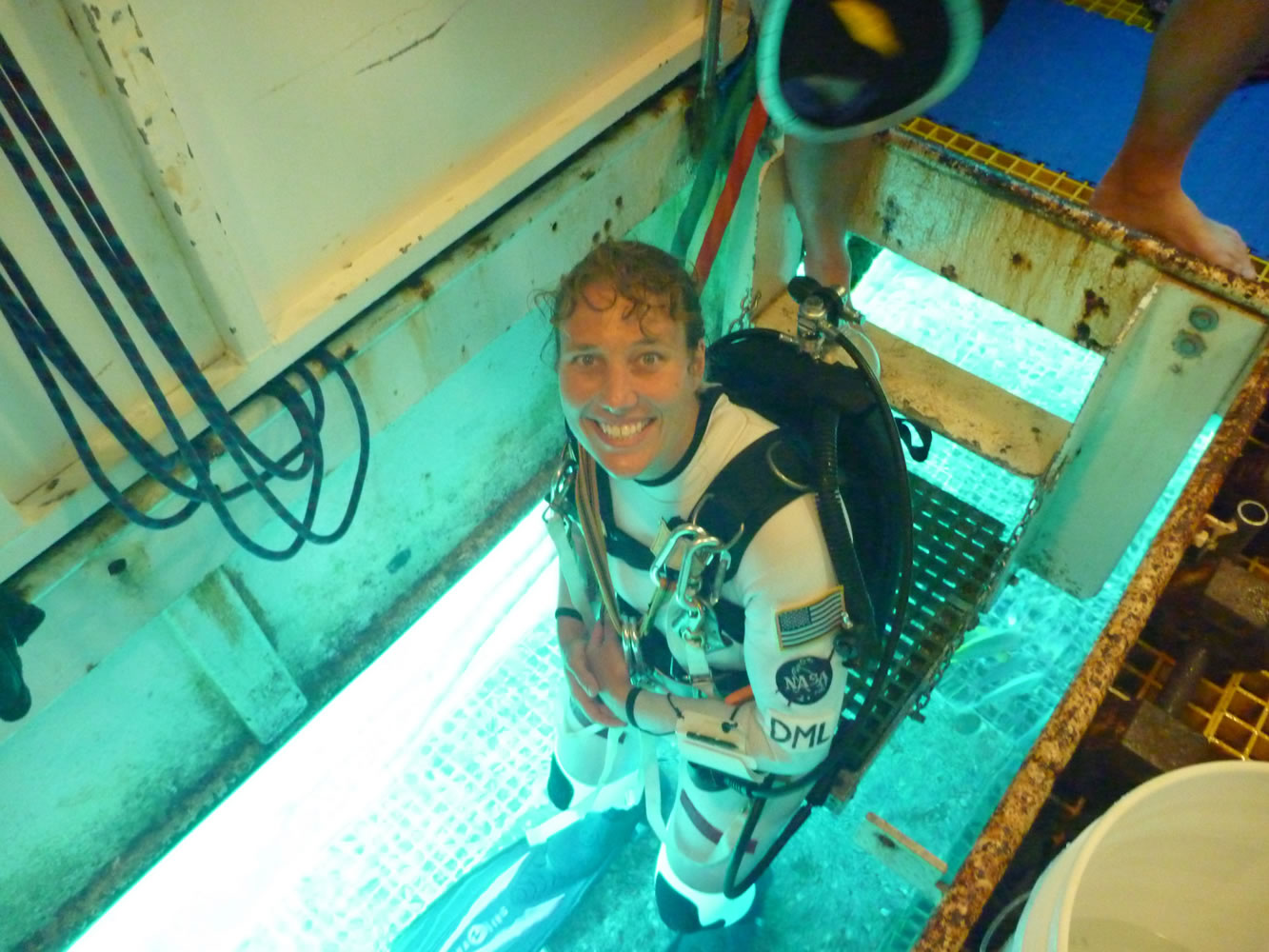In the photograph, Dottie Metcalf-Lindenburger looks like a really big hood ornament on a really small car.
Or maybe she is riding one of the world’s coolest scooters.
Actually, the vehicle is a tiny one-person submarine, with the operator peering out of a dome. And Metcalf-Lindenburger, with her flippered feet linked to the front of the submersible, is helping NASA figure out the best way to work on an asteroid.
“We’ve been very busy, space-walking twice a day,” the former Hudson’s Bay High School teacher said during a brief telephone interview Monday morning.
Metcalf-Lindenburger is commanding the NEEMO 16 mission designed to simulate working conditions — and living conditions — in an extended space flight.
With three other aquanauts and two support personnel, she is spending a couple of weeks in about 60 feet of water, off the coast of Florida. They’re trying out a couple of different approaches to the manual labor required for taking asteroid samples in zero gravity.
Before trying the minisubs as work platforms, the team members used backpack propulsion units to move around their mock-up asteroid.
The NEEMO (NASA Extreme Environment Mission Operations) exercises are called analogs — ways to train personnel and test techniques in weightless conditions without launching anybody into space.
Metcalf-Lindenburger has already been in space, during Discovery’s two-week shuttle mission in 2010.
She still had plenty to learn in preparing for this assignment, she said. She’d already done some scuba diving, but she needed to earn open-water certification for this mission.
More training helped her become accustomed to the underwater gear, including a helmet that she says has “awesome capabilities.”
While the underwater habitat is only about four miles off Key Largo, some of the conditions are extreme. The air pressure is about 21/2 times what they’re used to. They’ll be looking to see what health implications that has, Metcalf-Lindenburger said.
And as Tim Peake, a British astronaut with the European Space Agency, noted in a blog: “It was very hard to whistle.”
The other team members are planetary scientist Steven Squyres from Cornell University and astronaut Kimiya Yui with the Japan Aerospace Exploration Agency.
While her team is the focus of the mission, it’s not the only NASA contingent at the Key Largo base.
“It’s not just NEEMO,” Metcalf-Lindenburger said. “A whole subset of the Johnson Space Center space exploration team is here.”
Since retiring its shuttle fleet, NASA no longer can send full-sized crews to the International Space Station. That doesn’t mean the United States has given up exploring space. President Barack Obama has said that the United States would have a new spacecraft designed to reach an asteroid by 2025.
NEEMO 16 is a way to help younger members of the astronaut corps build some skills and participate in a mission, she said.





